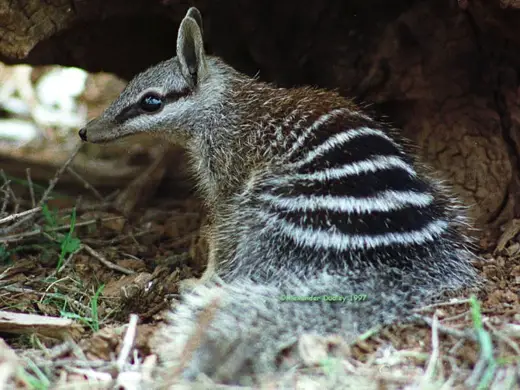Key Deer
The Key Deer is a relative of the White tailed deer, that lives in Big Pine Key areas of Florida.
The Key deer is the smallest of all white tailed deer, and are not found in any other areas of the world.
Key Deer are only 24 inches tall at the shoulder and weigh at most about 60 pounds.
They are tiny creatures but the males still have antlers that may grow to as many as 8 or ten points.

Key Deer
Bucks are larger and may weigh as much as 75 pounds.
February through March the males will drop their antlers and re-grow them nearly immediately, so that they are beginning to grow new ones by June. By August their antlers are completely re-grown and all the velvet is rubbed away by September.
Key Deer feed on plants such as mangrove and palm berries. They will drink the salt water and can tolerate a certain amount of salt in their bodies, but do need and search out fresh water as well.
In late September the rut, or mating season starts for the Key Deer.
It will last nearly through November and sometimes in to the month of December before it ends.
Gestation is about 200 days, when one fawn is born, or rarely twins.
Fawns usually are dropped in June.
At birth a Key Deer weighs just 3 or 4 pounds.
There is nothing in existence that tells where the key Deer originated, but it is believed in scientific communities that they came from the mainland many thousand years ago.
Across a land bridge when the Wisconsin glaciers melted it took away the land bridge, leaving just the small islands known as the Key Islands.

Key Deer
The very earliest comments about the Key deer that are mentioned in any record tell of a shipwreck of the Ship Fontaneda, where the Spaniards tell of eating the deer that were found there.
In the 1940s only fifty of these deer survived. Due to the assistance of conservationists and the opening of the Key Deer Refuge their numbers increased dramatically and they are no longer in danger of extinction.



I go to Big Pine Key every winter and love to see the Key Deer up close. While I never feed them, I do sometimes pet them. I was told by locals they do not carry ticks. Is that possible?